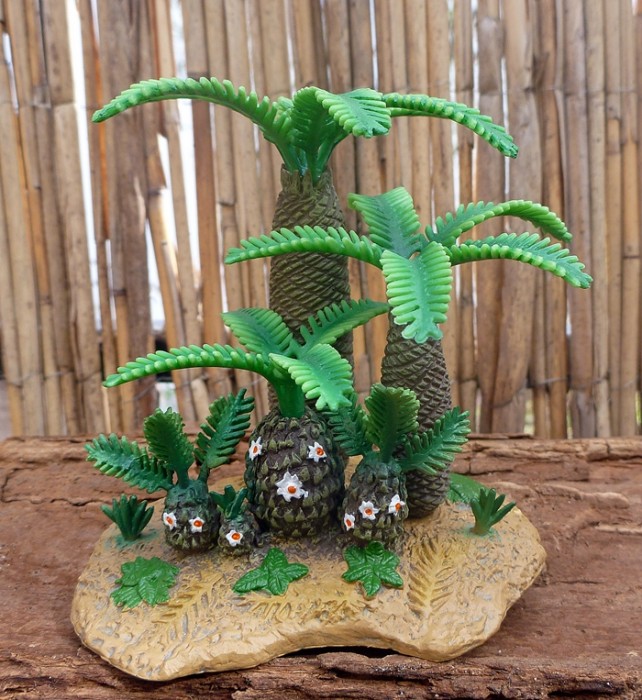Review and photos by Lanthanotus, edited by Suspsy
Greens, stems, and leaves, but no teeth, no blood, no gore . . . no wonder plants seldom provide more than background for movies or our dinosaur collections. Day of the Triffids (1962) is the classic plant horror film par excellence, where seemingly harmless plants attack and kill humans and charge to take over world domination within days (for those of you that can’t stand classic B-movies or modern semi-quality TV adaptations of them, Splinter may be a more thrilling choice, though the antagonist is !SPOILER ALERT!
Age: Eocene
Review: Williamsonia (CollectA)
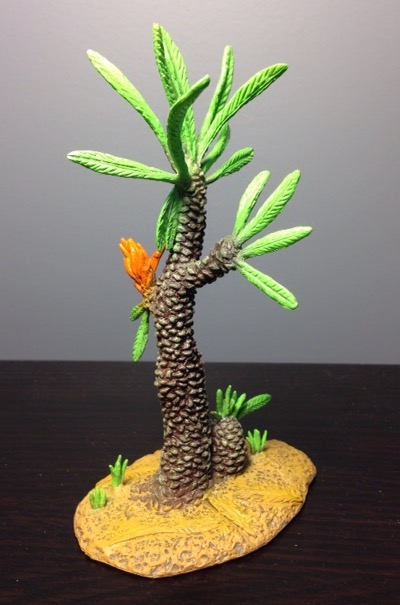
5 (15 votes)
Thought I’d take a stab at reviewing a prehistoric plant for the first time. Let’s take a look at Williamsonia, a member of the order of Bennettitales, or cycadeoids. Bennettitales were an order of seed plants that first arose during the Triassic and then flourished all the way until the end of the Cretaceous.
Review: Entelodon (Mojö Fun)
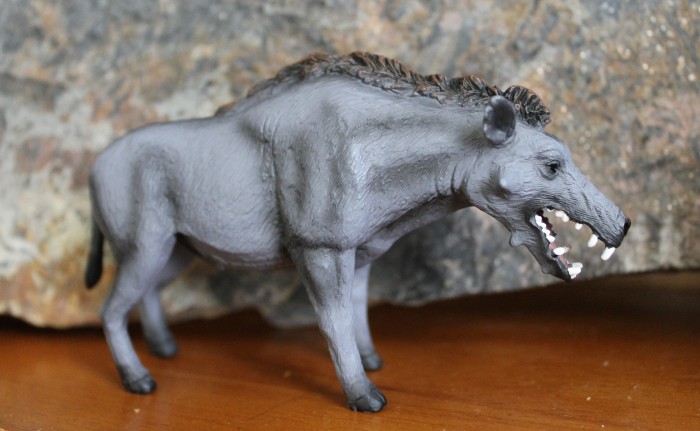
4.8 (6 votes)
Despite their appearance and popular designation as “Hell” or “terminator” pigs the group scientifically knows as the entelodontidae are now thought to have been more closely related to whales and hippopotamuses. Regardless of their taxonomic affinity there is no denying the superficial resemblance the entelodonts have to pigs, and one has to wonder if they had a similar temperament to pigs and hippopotamuses as well.
Review: Prehistoric Landscapes Cycad by Safari Ltd.
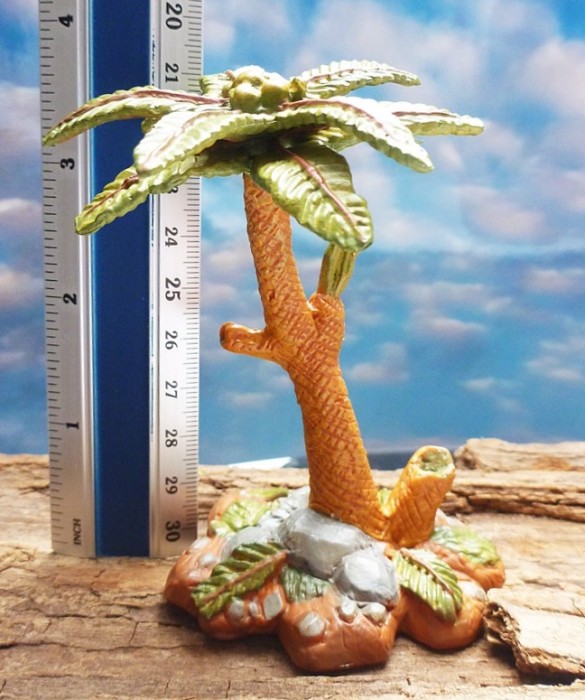
4.9 (11 votes)
Review and photographs by Lanthanotus, edited by Suspsy
Here comes another (unfortunately retired) one of the prehistoric plants produced by Safari Ltd, the other two being reviewed here. I did not include it in the first review as my usual retailer didn’t have it in stock anymore and it took some time to find one for a reasonable price.
Here comes another (unfortunately retired) one of the prehistoric plants produced by Safari Ltd, the other two being reviewed here. I did not include it in the first review as my usual retailer didn’t have it in stock anymore and it took some time to find one for a reasonable price.
Review: Prehistoric Plants (Safari Ltd)
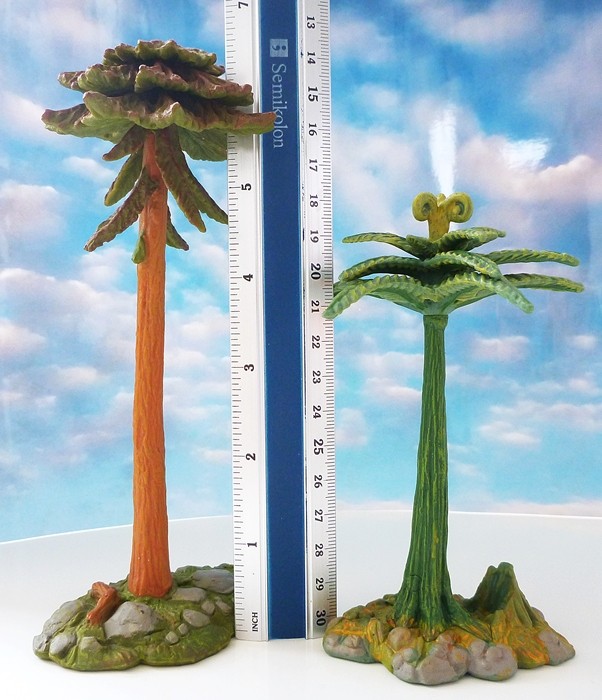
4.9 (10 votes)
Review and photographs by Lanthanotus, edited by Suspsy
Plants and trees may not be a collector’s first choice of models to collect, and not only because there’s so few around. In general, humans feel more attracted to animals than towards plants despite the fact that we could still live well without keeping or even breeding (and feeding on) animals, but not without plants.
Plants and trees may not be a collector’s first choice of models to collect, and not only because there’s so few around. In general, humans feel more attracted to animals than towards plants despite the fact that we could still live well without keeping or even breeding (and feeding on) animals, but not without plants.
Review: Arsinoitherium (CollectA)
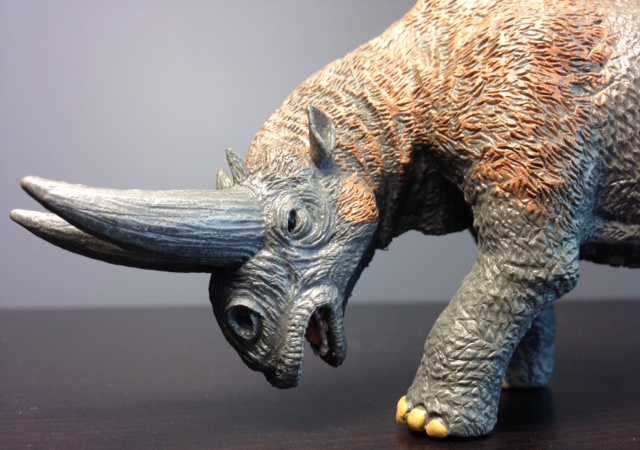
4.3 (20 votes)
Arsinoitherium was a large herbivorous denizen of swamps and rainforests during the late Eocene and early Oligocene eras. Despite its resemblance to a rhinoceros, it was more closely related to elephants, hyraxes, and sirenians.
Released by CollectA in 2014, this Arsinoitherium toy measures just about 18.5 cm long from the tips of its horns to the end of its tail.
Review: Hyaenodon (Mojö Fun)
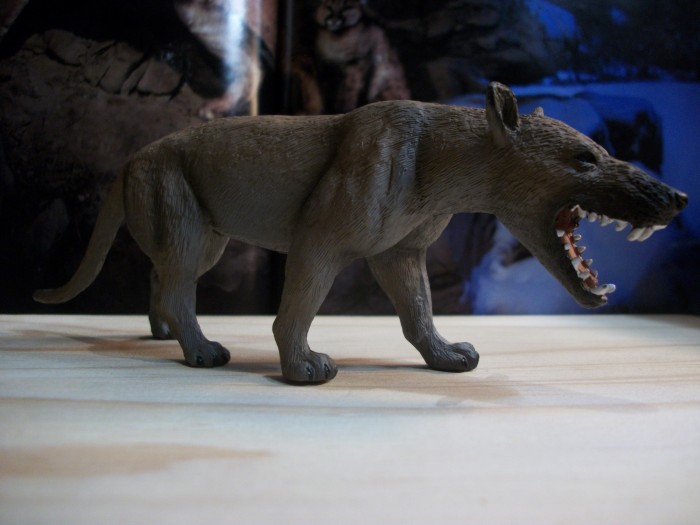
4.7 (9 votes)
Hyaenodon was an interesting predatory animal that first evolved 42 million years ago and lived from the Late Eocene through to Early Miocene. The first thing to know about them is that they are not related to hyenas. In fact, they were a creodont, a long extinct group of mammals that did not survive the Miocene.
Review: Brontotherium (=Megacerops) (Mojö Fun)
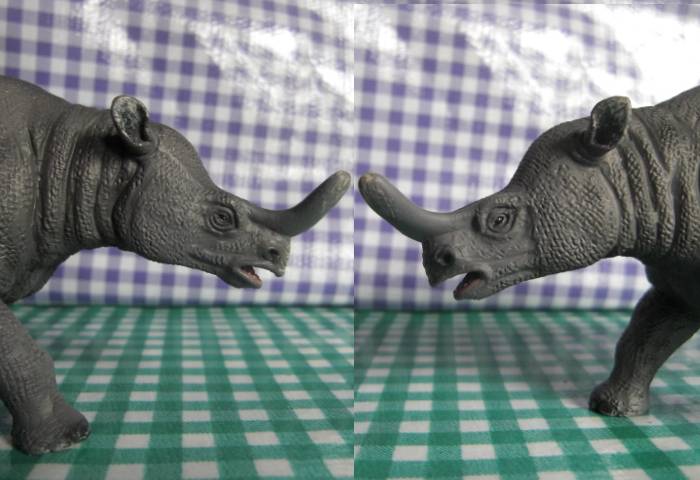
4.3 (7 votes)
Review and photos by Megalosaurus, edited by Plesiossuria.
In 2012, CollectA released a pretty nice non-conventional toy model of a Megacerops (=‘Brontotherium’). This was good news for prehistoric mammal collectors. But in 2013, Mojö surprised us with the release of four prehistoric mammals.
In 2012, CollectA released a pretty nice non-conventional toy model of a Megacerops (=‘Brontotherium’). This was good news for prehistoric mammal collectors. But in 2013, Mojö surprised us with the release of four prehistoric mammals.
Review: Gastornis (Wild Safari by Safari Ltd.)
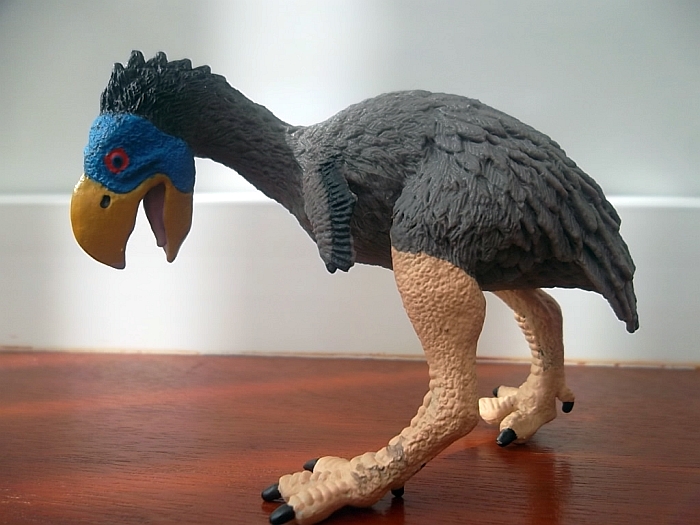
4.7 (17 votes)
Perhaps surprisingly for an animal that was a staple of popular books on prehistoric life for decades (and made an appearance in Walking With Beasts), models of Gastornis are a little thin on the ground. Happily, Safari have stepped forward with this very decent effort – the first toy “Diatryma” in years.
Review: Megacerops (CollectA)

4.7 (13 votes)
Review and photos by Nathan Morris (AKA ‘Takama’), edited by Plesiosauria.
Megacerops was a large odd-toed ungulate that lived during the Late Eocene in North America. It is most commonly referred to by the synonymous name Brontotherium. Brontotherium means ‘thunder beast’, and its origins come from an old American legend that suggest that these beasts ran across the clouds, while causing thunder to roar with their footsteps.
Megacerops was a large odd-toed ungulate that lived during the Late Eocene in North America. It is most commonly referred to by the synonymous name Brontotherium. Brontotherium means ‘thunder beast’, and its origins come from an old American legend that suggest that these beasts ran across the clouds, while causing thunder to roar with their footsteps.
Review: Andrewsarchus (Bullyland)
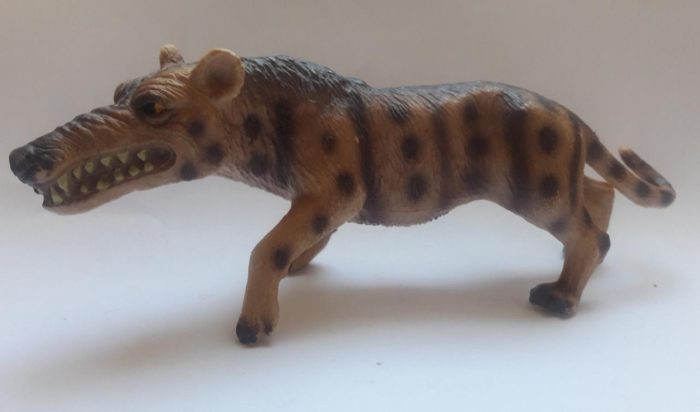
2.9 (12 votes)
Edited by Dinotoyblog
Andrewsarchus is interesting in terms of its discovery, its size, its habits and its look. It is a large basal mesonychid from the Eocene Epoch that is rarely depicted by toy lines. Safari and Bullyland are the only companies that released it as a commonly available toy figure.
Andrewsarchus is interesting in terms of its discovery, its size, its habits and its look. It is a large basal mesonychid from the Eocene Epoch that is rarely depicted by toy lines. Safari and Bullyland are the only companies that released it as a commonly available toy figure.
Review: Hyaenodon (AAA)
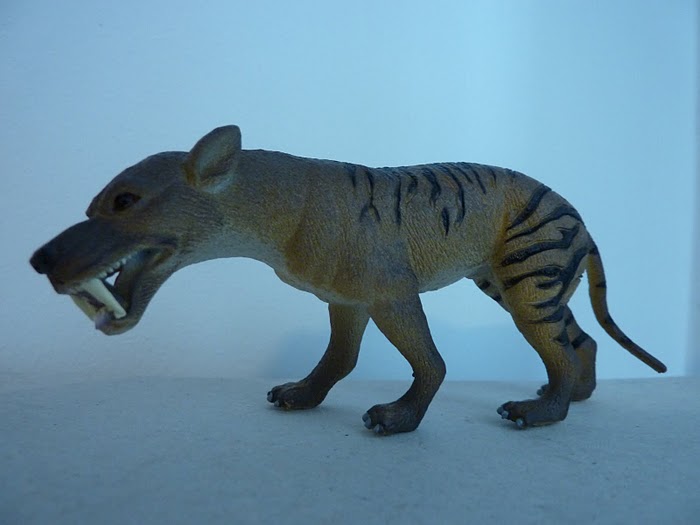
3.5 (8 votes)
Review and photos by Mihnea (Wildheart)
Existing for approximately 26 million years, Hyaenodonts were some of the largest predators of the Late Eocene and Early Miocene epochs. Their name comes from the sharp hyena-like teeth used to tear apart possible prey. The skulls of these animals were huge and well equipped for hunting, but their brains were quite small, something typical in primitive carnivorous mammals.
Existing for approximately 26 million years, Hyaenodonts were some of the largest predators of the Late Eocene and Early Miocene epochs. Their name comes from the sharp hyena-like teeth used to tear apart possible prey. The skulls of these animals were huge and well equipped for hunting, but their brains were quite small, something typical in primitive carnivorous mammals.

